Excuse the crappy iPhone shots. It looks like this (Taiwan, Gimhongsok’s Canine Construction):
This also (PNG, Kwoma Arts, koromb ceiling):
As well as (Kashmir, Raqib Shaw, a small detail from one of his amazing enamel paintings):
Plus (Oz, Timothy Cook, knockout Aboriginal paintings; I’m favouriting these):
And (India, Atul Dodiya’s vitrines, more ideas in each one than some entire commercial gallery shows):
The most exciting contemporary art showing in the country right now is in Brisbane, and it’s mostly made by artists in Asia. It’s the APT7, the 20th anniversary of the Asian Pacific Triennal at GOMA.
We were talking later to a gallerist, an old hand, who complained that it was all just more global neo-conceptual-pop, much like what they make in this country. Much like what all the graduate art shows this year in Melbourne have displayed. They all look at the same magazines, he said.
We got a different angle from a couple of friends we had bumped into at APT7; they go up every three years for the opening and between them have seen most of the seven shows since 1993. They said that it was thematically, or tonally, different each time. One of them demurred that she had not been keen to come for the show this year because it had so much islander content, an art style (shall we say) she had seen too much of. But, she went on, she was really glad to be here because nearly every room offered something to get excited about, and the islander stuff was pretty great. (It is.)
I think it’s a super show, and the vibe on the opening weekend was certainly enlivening. Brisbane! Why, I asked Constant Gardener, do you think this (enormous) grouping of “neo-conceptual-pop” is any better than what’s made at home? CG replied: Well, they have cherry-picked — commissioned — the best artists from a territory with 2 billion people, the best practitioners from China and India and Indonesia. And these countries have a lot of issues to deal with, which is often useful for artists. Unlike here, the land of the bland. (The lucky country.)
I think CG’s is a reasonable explanation of the high quality of APT7 and its frisson. I’m reminded of being in Rome late last year, a city full of antique and ancient art treasures, but no contemporary work that compared. Until we came upon Indian Highway, at the MAXXI museum of 21st century art — a globally travelling show of contemporary Indian artists, many working at monumental scale. What a blast of fesh air new blood new broom — it was hair-raising after the swathes of gilt ornamentation.
So, if you’re thinking about APT7, I say Go. I haven’t gone into details or picked favourites — there really is a lot; and a personal response is the point. It’s fresh, fun and fascinating; you could spend a whole weekend looking. And if most of it is not work that will last, that’s par for the course, and it doesn’t matter. And if it feels like a strange ghettoing of “Asian” art, well that’s a long argument. Sometimes we just need a good dose of Now.
+ + +
My favourite art in 2012
I’ve applied a very high standard to my cull. This is all superb, and rather shockingly for me, it’s all film based.
Hockney’s joiner videos
In February we dropped into London to see the Lucien Freud portrait show and the ginormous David Hockney exhibition that filled the Royal Academy. We had timed tickets and the rooms were packed on a couple of cold winter mornings. The Freud was compelling and the Hockney was overwhelming (I spied Fred Schepisi inspecing a canvas there).
The best things (as good as the best paintings) I now think were in the video room at the Hockney. A medium sized dark room accommodating 100 people seated and standing (I counted) showing on a grid of 3 X 6, an 18-screen montage (each screen maybe a metre wide?) of landscape videos. Each of the 18 screens showed a part of the whole very hi-res composition of a bit of Yorkshire landscape, made by a car with 18 carefully angled cameras driving past very slowly. (Sometimes split into two multiscreens of 3 X 3, above.)
He showed videos made during each of the seasons. 18 screens of snow as a huge panorama. 18 screens of Summer — grasses softly billowing, butterflies zigzagging, the air as palely blue as only English skies in summer seem to be. You could almost smell the wild perfume; it was breath-stopping. A whole room of folk, youngsters but mostly over 30s and many over 60s, glued to video art! That sight itself was remarkable. A most beautiful set of works, video made profoundly sensual, compelling you to observe and rewarding with great pleasures — returning us to a close scrutiny of nature must be among the most radical things you can do in art right now.
Christian Marclay’s The Clock
Mulched here in May. On the one hand, mind-blowing; on the other, big hand, Constant Gardener found it unbearably tedious and pointless.
Yuan Goang-Ming’s Disappearing Landscape – Passing II 2011
This is a three screen “video installation contrasting the artist’s personal experience with the urban landscape of Taipei. Using long camera pans and shifting film speeds, Yuan distorts physical time and geographical space to suggest the nature of memory.” All that — it swoops very very fast down a dark highway, then it brakes to a slow pan, it lingers over a recontruction of his late father’s study, it swoops into water, and pops out into kitchens, the cameras zooing backwards. It moves, and it’s moving. It’s the business, showing now at APT7 (above).

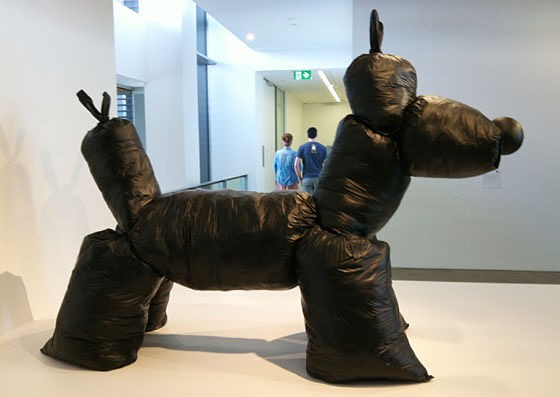

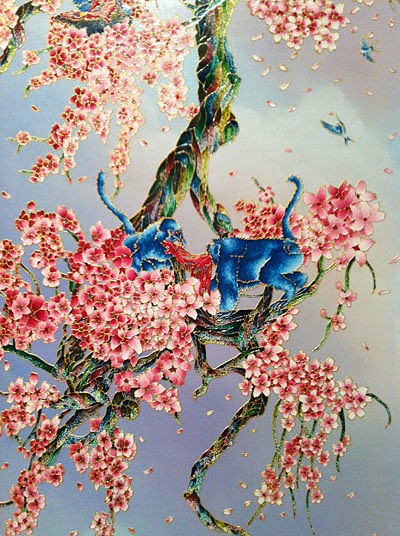
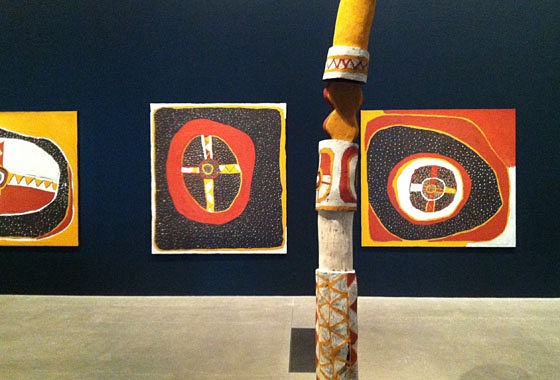
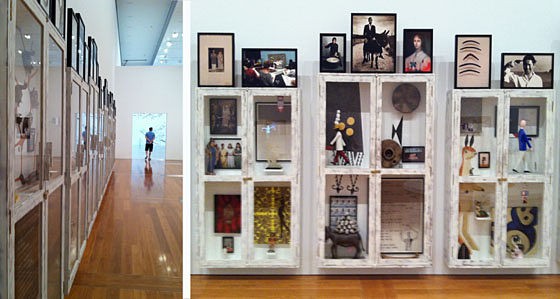

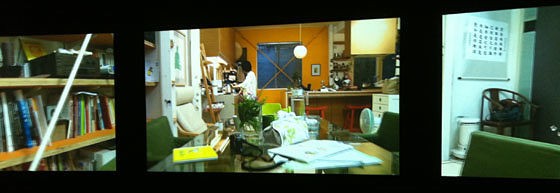







Crikey is committed to hosting lively discussions. Help us keep the conversation useful, interesting and welcoming. We aim to publish comments quickly in the interest of promoting robust conversation, but we’re a small team and we deploy filters to protect against legal risk. Occasionally your comment may be held up while we review, but we’re working as fast as we can to keep the conversation rolling.
The Crikey comment section is members-only content. Please subscribe to leave a comment.
The Crikey comment section is members-only content. Please login to leave a comment.